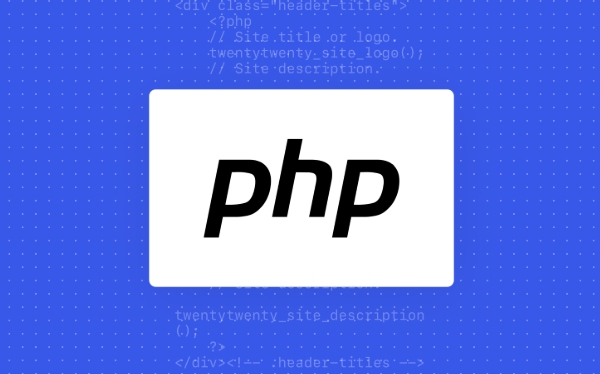The never return type in PHP 8.1 indicates that a function will not return any value, such as when it throws an exception, exits the script, or runs indefinitely. 1. Use never for functions that always throw exceptions. 2. Apply it to functions that terminate execution like exit() or die(). 3. Utilize it for infinite loops such as event loops. Unlike void, which implies intentional no return value, never means the function cannot return at all. Attempting to return a value—even null—results in a compile-time error. Benefits include improved static analysis, better code clarity, and safer logic handling, especially in validation functions that halt execution on failure.

The never return type in PHP 8.1 is used to indicate that a function will never return a value — not even null. This could be because the function throws an exception, exits the script, or enters an infinite loop. It’s a way to communicate intent clearly in your code and help static analyzers catch potential bugs.

When Should You Use never?
You should use the never return type in situations where execution after the function call won't continue normally. Common cases include:

- Functions that always throw exceptions
- Functions that terminate the script (like
exit()ordie()) - Functions that run indefinitely (e.g., event loops or daemons)
Using never makes it clear to other developers — and tools like IDEs and static analysis — that this function doesn’t return control to the caller.
Examples:

- A utility function that throws a custom exception
- A function that validates input and throws if something's wrong
- A script bootstrapper that exits early under certain conditions
How Is It Different From void?
At first glance, never might look similar to void, but they're quite different:
-
voidmeans a function returns nothing intentionally — it just does something. -
nevermeans the function cannot return at all because something interrupts normal flow.
For example:
function logMessage(string $message): void {
echo $message;
}
function fail(): never {
throw new Exception('Failure!');
}In this case, logMessage() just does its job and returns, while fail() never gives the program a chance to continue.
One important thing: you can't return anything from a never function — not even null. If you try, PHP will throw a compile-time error.
Practical Benefits of Using never
Using never helps with better code clarity and improves tooling support:
- Static analysis: Tools like Psalm or PHPStan can catch unreachable code or invalid assumptions.
- Code readability: Other developers can immediately see that this function changes the normal flow.
- Safer logic: Helps avoid incorrect handling of return values that will never exist.
A real-world example might be validation functions that throw early:
function validateEmail(string $email): never {
if (!filter_var($email, FILTER_VALIDATE_EMAIL)) {
throw new InvalidArgumentException("Invalid email address.");
}
}This makes it clear that if the function completes, execution stops — which helps when chaining validations or building APIs with strict input checks.
That’s the basic idea behind never in PHP 8.1. It's not something you'll use every day, but when appropriate, it makes your intentions clearer and helps prevent logic errors.
The above is the detailed content of What is the never return type in PHP 8.1?. For more information, please follow other related articles on the PHP Chinese website!

Hot AI Tools

Undress AI Tool
Undress images for free

Undresser.AI Undress
AI-powered app for creating realistic nude photos

AI Clothes Remover
Online AI tool for removing clothes from photos.

Clothoff.io
AI clothes remover

Video Face Swap
Swap faces in any video effortlessly with our completely free AI face swap tool!

Hot Article

Hot Tools

Notepad++7.3.1
Easy-to-use and free code editor

SublimeText3 Chinese version
Chinese version, very easy to use

Zend Studio 13.0.1
Powerful PHP integrated development environment

Dreamweaver CS6
Visual web development tools

SublimeText3 Mac version
God-level code editing software (SublimeText3)

Hot Topics
 What are some best practices for versioning a PHP-based API?
Jun 14, 2025 am 12:27 AM
What are some best practices for versioning a PHP-based API?
Jun 14, 2025 am 12:27 AM
ToversionaPHP-basedAPIeffectively,useURL-basedversioningforclarityandeaseofrouting,separateversionedcodetoavoidconflicts,deprecateoldversionswithclearcommunication,andconsidercustomheadersonlywhennecessary.StartbyplacingtheversionintheURL(e.g.,/api/v
 How do I implement authentication and authorization in PHP?
Jun 20, 2025 am 01:03 AM
How do I implement authentication and authorization in PHP?
Jun 20, 2025 am 01:03 AM
TosecurelyhandleauthenticationandauthorizationinPHP,followthesesteps:1.Alwayshashpasswordswithpassword_hash()andverifyusingpassword_verify(),usepreparedstatementstopreventSQLinjection,andstoreuserdatain$_SESSIONafterlogin.2.Implementrole-basedaccessc
 What are the differences between procedural and object-oriented programming paradigms in PHP?
Jun 14, 2025 am 12:25 AM
What are the differences between procedural and object-oriented programming paradigms in PHP?
Jun 14, 2025 am 12:25 AM
Proceduralandobject-orientedprogramming(OOP)inPHPdiffersignificantlyinstructure,reusability,anddatahandling.1.Proceduralprogrammingusesfunctionsorganizedsequentially,suitableforsmallscripts.2.OOPorganizescodeintoclassesandobjects,modelingreal-worlden
 What are weak references (WeakMap) in PHP, and when might they be useful?
Jun 14, 2025 am 12:25 AM
What are weak references (WeakMap) in PHP, and when might they be useful?
Jun 14, 2025 am 12:25 AM
PHPdoesnothaveabuilt-inWeakMapbutoffersWeakReferenceforsimilarfunctionality.1.WeakReferenceallowsholdingreferenceswithoutpreventinggarbagecollection.2.Itisusefulforcaching,eventlisteners,andmetadatawithoutaffectingobjectlifecycles.3.YoucansimulateaWe
 How can you handle file uploads securely in PHP?
Jun 19, 2025 am 01:05 AM
How can you handle file uploads securely in PHP?
Jun 19, 2025 am 01:05 AM
To safely handle file uploads in PHP, the core is to verify file types, rename files, and restrict permissions. 1. Use finfo_file() to check the real MIME type, and only specific types such as image/jpeg are allowed; 2. Use uniqid() to generate random file names and store them in non-Web root directory; 3. Limit file size through php.ini and HTML forms, and set directory permissions to 0755; 4. Use ClamAV to scan malware to enhance security. These steps effectively prevent security vulnerabilities and ensure that the file upload process is safe and reliable.
 What are the differences between == (loose comparison) and === (strict comparison) in PHP?
Jun 19, 2025 am 01:07 AM
What are the differences between == (loose comparison) and === (strict comparison) in PHP?
Jun 19, 2025 am 01:07 AM
In PHP, the main difference between == and == is the strictness of type checking. ==Type conversion will be performed before comparison, for example, 5=="5" returns true, and ===Request that the value and type are the same before true will be returned, for example, 5==="5" returns false. In usage scenarios, === is more secure and should be used first, and == is only used when type conversion is required.
 How can you interact with NoSQL databases (e.g., MongoDB, Redis) from PHP?
Jun 19, 2025 am 01:07 AM
How can you interact with NoSQL databases (e.g., MongoDB, Redis) from PHP?
Jun 19, 2025 am 01:07 AM
Yes, PHP can interact with NoSQL databases like MongoDB and Redis through specific extensions or libraries. First, use the MongoDBPHP driver (installed through PECL or Composer) to create client instances and operate databases and collections, supporting insertion, query, aggregation and other operations; second, use the Predis library or phpredis extension to connect to Redis, perform key-value settings and acquisitions, and recommend phpredis for high-performance scenarios, while Predis is convenient for rapid deployment; both are suitable for production environments and are well-documented.
 How do I perform arithmetic operations in PHP ( , -, *, /, %)?
Jun 19, 2025 pm 05:13 PM
How do I perform arithmetic operations in PHP ( , -, *, /, %)?
Jun 19, 2025 pm 05:13 PM
The methods of using basic mathematical operations in PHP are as follows: 1. Addition signs support integers and floating-point numbers, and can also be used for variables. String numbers will be automatically converted but not recommended to dependencies; 2. Subtraction signs use - signs, variables are the same, and type conversion is also applicable; 3. Multiplication signs use * signs, which are suitable for numbers and similar strings; 4. Division uses / signs, which need to avoid dividing by zero, and note that the result may be floating-point numbers; 5. Taking the modulus signs can be used to judge odd and even numbers, and when processing negative numbers, the remainder signs are consistent with the dividend. The key to using these operators correctly is to ensure that the data types are clear and the boundary situation is handled well.






